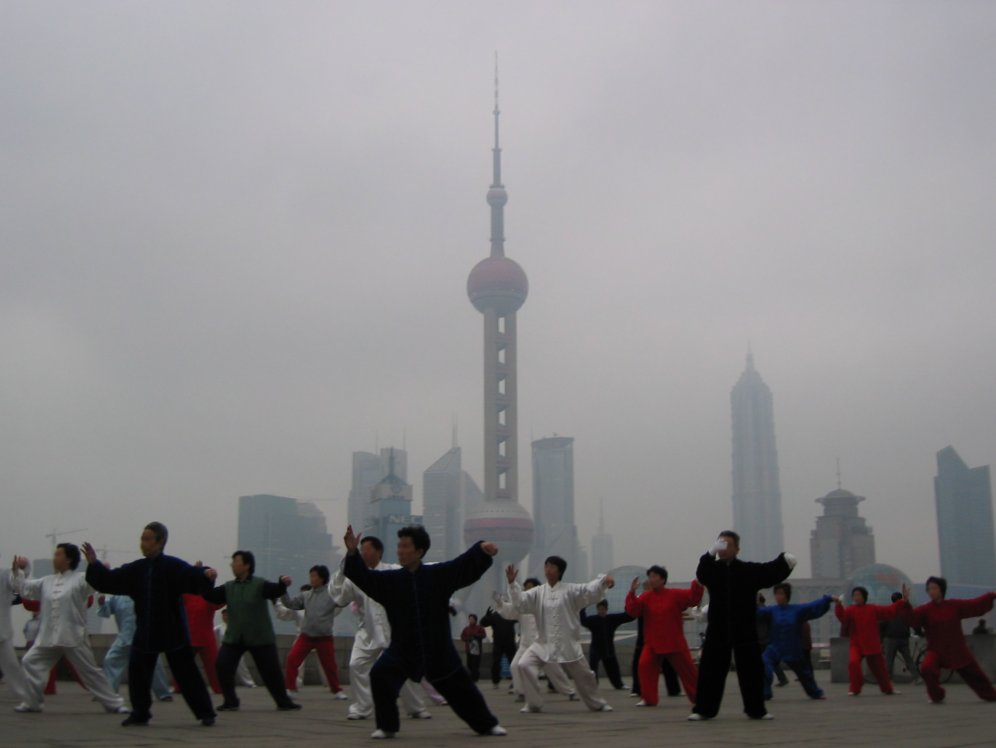
Styles of Chinese martial arts
There are hundreds of different styles of Chinese martial arts, each with their own sets of techniques and ideas. The various movements in kung fu, most of which are imitations of the fighting styles of animals, are initiated from one to five basic foot positions: normal upright posture and the four stances called dragon, frog, horse riding, and snake.
For a list of styles, see List of Chinese martial arts.
The concept of martial arts styles appeared from around the Ming dynasty. Before the Ming period, martial skills were commonly differentiated mainly by their lineage.[1] There are common themes among these styles which allow them to be grouped according to generalized "families" (家; jiā), "fractions" (派; pài), "class" (门; mén), or "schools" (教; jiào) of martial art styles. There are styles that mimic movements from animals, or otherwise refer or allude to animals or mythical beings such as dragons, and others that gather inspiration from various Chinese philosophies or mythologies. Some deeply internal styles tend to focus strongly on practice relating to harnessing of qi energy, while some more-conspicuously external styles tend more to display skills and abilities in competition or exhibition.
The rich variety of styles has led to the creation of numerous classification schemes.[2][3]
Geographical location such as regional affiliation is one well-known example.
A particular Chinese martial arts style can be referred to as either a northern fist (北拳) or a southern fist (南拳) depending on its point of origin. Additional details such as province or city can further identify the particular style. Other classification schemes include the concept of external (外家拳) and internal. This criterion concerns the training focus of a particular style. Religious affiliation of the group that found the style can also be used as a classification. The three great religions of Taoism, Buddhism and Confucianism have associated martial arts styles. There are also many other criteria used to group Chinese martial arts; for example, imitative-styles (像形拳) and legendary styles; historical styles and family styles. Another more recent approach is to describe a style according to their combat focus.
Historical classifications[edit]
Imitative-styles[edit]
Imitative-styles are styles that were developed based on the characteristics of a particular creature such as a bird or an insect. Entire systems of fighting were developed based on the observations of their movement, fighting abilities and spirit. Examples of the most well-known styles are white crane, tiger, monkey (Houquan), dog and mantis. In some systems, a variety of animals are used to represent the style of the system; for instance, there are twelve animals in most Xing yi practice.
Legendary and historical styles[edit]
Many Chinese martial arts styles are based or named after legends or historical figures. Examples of such styles based on legends and myths are the Eight Immortals and Dragon styles. Example of styles attributed to historical figures include Xingyiquan and its relationship to Yue Fei and tai chi which trace its origins to a Taoist Zhang Sanfeng.
Family styles[edit]
Family affiliations are also an important means of identifying a Chinese martial arts system. Heavily influenced by the Confucian tradition, many styles are named in honor of the founder of the system. The five family (Choi, Hung, Lau, Lei, Mok) of Southern Chinese martial arts are representative of family styles. Family styles can also denote branches of a system. For example, the families of Chen, Yang, Wu and Sun represent different training approaches to the art of Tai Chi Chuan.
By main style of application/attack[edit]
Another popular method to describe a particular style of Chinese martial arts is to describe the style's emphasis in terms of the four major applications. The four major applications are: kicking (踢), hitting (打), wrestling (摔) and grabbing (Chin na). A complete system will necessary include all four types of applications but each style will differ in their training focus. For example, most Northern styles are said to emphasize kicking, Southern styles have a reputation for their intricate hand techniques, Shuai jiao practitioners train predominately in full-body close-range techniques, Eagle claw fighters are noted for their grabbing expertise, and Wing Chun focusses on hitting (with the hands/elbows).
Other styles[edit]
The variety of classification schemes, like the subject of Chinese martial arts, are endless. Some styles are named after well-known Chinese philosophies. For example, Baguazhang is based on the Taoist philosophy of the eight trigrams (Bagua). Some styles are named after the key insight suggested by the training. For example, liuhebafa is a system based on the ideas of six combinations and eight methods.